Crafting the perfect BBQ brisket involves several key steps. Start with a high-quality packer brisket for even cooking and caramelization. Create a flavorful rub with salt, brown sugar, and spices to enhance taste and texture. Smoke the meat slowly (225°F – 250°F) using hardwood pellets for a crispy, golden bark. Slice against the grain for tenderness and serve with complementary sides like coleslaw, potato dishes, and cornbread. Host an unforgettable dinner party by focusing on both flavor and ambiance while avoiding common mistakes in preparation.
Unleash the ultimate BBQ experience with a perfectly cooked brisket—a true masterpiece for any meat enthusiast. This comprehensive guide takes you on a journey from choosing the ideal cut to mastering the art of seasoning and smoking techniques. Learn the science behind slow-cooking this tender beef to silky perfection, then discover the secret to slicing it uniformly. Accompany your creation with complementary sides, and host an unforgettable dinner party. Avoid common mistakes and elevate your BBQ game with our expert tips for achieving the perfect BBQ brisket recipe.
- Choosing the Right Brisket Cut for Your BBQ
- Seasoning 101: Creating the Perfect Rub
- Smoking Techniques for a Deliciously Crusty Bark
- The Science Behind Slow Cooking Brisket to Perfection
- Mastering the Art of Slicing: Thin and Uniform Cuts
- Accompanying Sides to Complement Your BBQ Brisket
- Tips for Hosting a Memorable Brisket Dinner Party
- Troubleshooting Common BBQ Brisket Mistakes
Choosing the Right Brisket Cut for Your BBQ
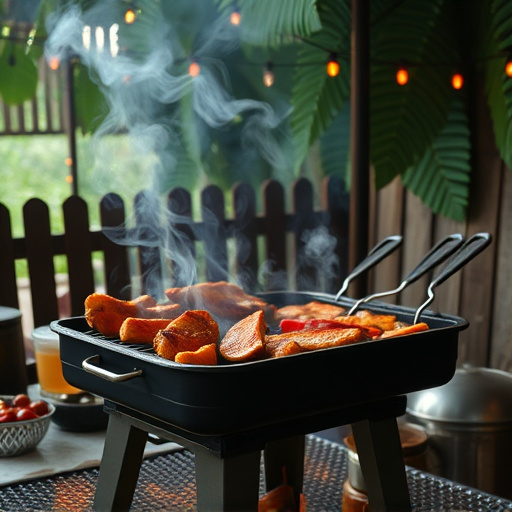
When it comes to crafting the perfect BBQ brisket recipe, selecting the right cut is half the battle won. Look for a high-quality whole packer brisket with good marbling—this is key to achieving that coveted bark and ensuring tender, juicy meat. The packer cut, located on the breast side of the animal, is ideal as it offers even marbling and fat distribution, resulting in a smoky, flavorful end product.
Remember, the point isn’t just to choose any brisket; it’s about selecting one that will caramelize beautifully under the heat, creating that crisp, golden bark everyone loves. Properly chosen, this cut of meat can transform your backyard BBQ into an epic culinary event, leaving your guests craving more.
Seasoning 101: Creating the Perfect Rub
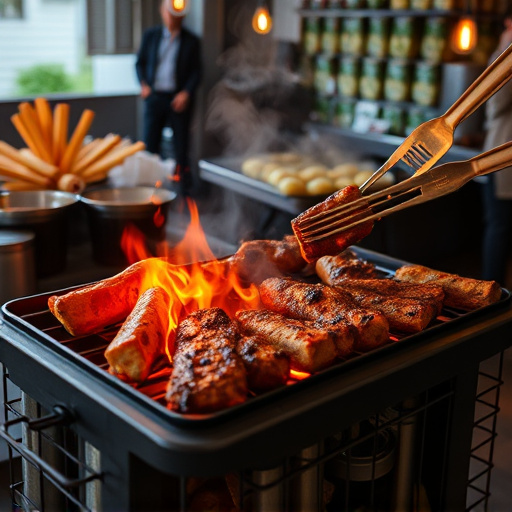
Creating the perfect rub for your BBQ brisket recipe is an art that can elevate your meal from good to exceptional. The key to a stellar seasoning blend lies in balancing flavors—a delicate dance between sweet, savory, and spicy elements. Start with a base of coarse sea salt and brown sugar, which will infuse moisture and a subtle sweetness into the meat. Next, incorporate spices like black pepper, garlic powder, paprika, and a touch of cayenne for heat. Adjust the quantities to suit your taste preferences; some prefer a more balanced approach, while others enjoy a bold, spicy kick.
Don’t underestimate the power of time—allowing the rub to sit on the meat for several hours or even overnight can intensify the flavors. This step is crucial for a well-seasoned BBQ brisket recipe. Use your hands to gently massage the rub into the brisket, ensuring every inch is coated evenly. The resulting bark not only adds a mouthwatering crunch but also seals in the juices, making your brisket tender and flavorful.
Smoking Techniques for a Deliciously Crusty Bark
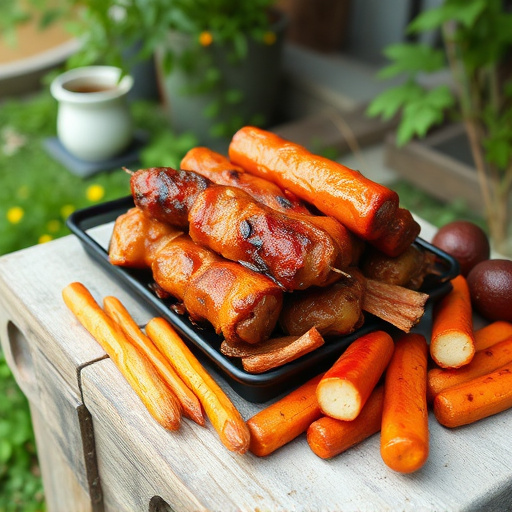
Achieving a deliciously crusty bark on your BBQ brisket recipe is an art, but with the right smoking technique, it’s well within reach. The key lies in controlling temperature and humidity throughout the slow-smoking process. Ideally, you want to maintain a consistent heat range between 225°F to 250°F (107°C to 121°C), which promotes slow, even cooking without drying out the meat. This is typically done using a pellet smoker or a traditional wood-fired grill with precise temperature control.
For that perfect bark, you want the exterior of the brisket to caramelize and develop a crispy, golden crust. This happens when sugar in the meat interacts with the heat, creating a delicious, smoky flavor. To enhance this effect, consider using a mixture of hardwood pellets like oak, hickory, or mesquite, which impart distinct flavors that complement beef. As the brisket smokes, rotate it occasionally to ensure even cooking and browning, allowing the bark to form uniformly.
The Science Behind Slow Cooking Brisket to Perfection
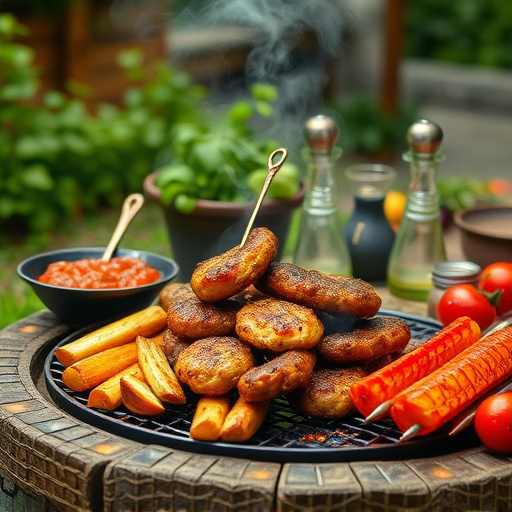
The art of preparing a perfectly sliced BBQ brisket involves more than just a delicious recipe; it’s a science carefully mastered by seasoned pitmasters. Slow cooking is key to achieving that coveted, tender bark—a result of collagen breakdown and gelatinization. The slow and low method allows for extensive moisture retention within the meat, ensuring every bite is both juicy and succulent. This process also leads to those desirable cracks in the bark, revealing a tender interior that melts in your mouth.
A BBQ brisket recipe isn’t just about firing up the grill; it’s understanding the precise temperature control needed to transform a tough cut of meat into a delectable dish. The slow cooking process breaks down connective tissues, making the brisket incredibly tender and allowing the flavors from marinades or rubs to penetrate deeply. This meticulous approach is what sets apart a good BBQ brisket from an exceptional one, where every step, from seasoning to resting, contributes to perfection.
Mastering the Art of Slicing: Thin and Uniform Cuts
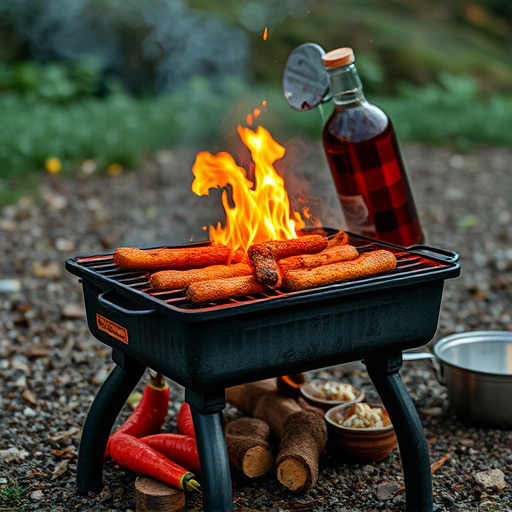
Mastering the art of slicing your BBQ brisket recipe is half the battle won. The key to a perfect bark and tender meat lies in making thin, uniform cuts. This ensures even cooking, allowing the juices to redistribute throughout the meat, resulting in a juicy and flavorful experience for every bite.
Using a sharp, high-quality knife, slice the brisket against the grain in thin slices. This technique not only guarantees tenderness but also makes the brisket easier to serve and eat. Uniform cuts ensure that each slice is equal in thickness, preventing some pieces from overcooking while others remain raw.
Accompanying Sides to Complement Your BBQ Brisket
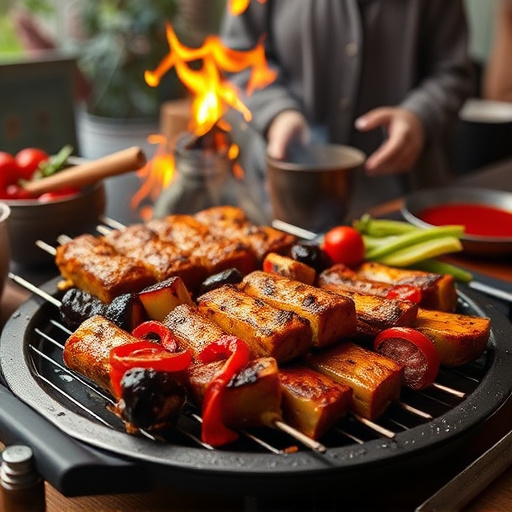
When it comes to a perfect BBQ brisket recipe, the right sides can elevate your dining experience. To complement your smoky, tender brisket, pair it with classic Texas-style fixings like creamy coleslaw and tangy barbecue sauce—a dynamic duo that balances the rich meat. Mashed potatoes, loaded with garlic and herbs, provide a hearty base while crispy potato wedges add a delightful crunch. For an extra kick, jalapeño cornbread makes for a delicious side, blending sweet and spicy notes to mirror the brisket’s depth of flavor.
Don’t forget about fresh, crisp vegetables like sliced cucumbers or pickles to cut through the richness. A simple green salad dressed with vinaigrette can also provide a refreshing contrast. For dessert, pecan pie or peach cobbler rounds out the meal, offering a sweet ending to your BBQ brisket feast.
Tips for Hosting a Memorable Brisket Dinner Party
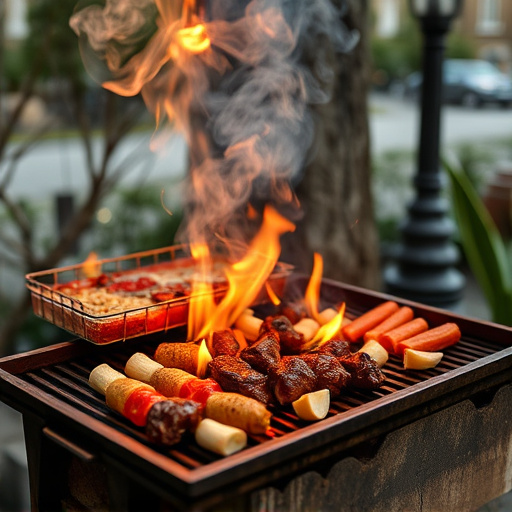
Hosting a memorable BBQ brisket dinner party is all about creating an experience that’s as delicious as it is entertaining. Start by selecting a high-quality, well-marbled brisket from your local butcher or market. The right cut ensures even cooking and maximum flavor. Pre-cooking the brisket in a slow cooker or oven allows for a more precise final stage of searing, resulting in that perfect bark without overcooking the meat inside.
Set the stage with ambient lighting, cozy seating arrangements, and a well-stocked bar. Encourage your guests to mingle while you finish preparing the brisket on the grill or smoker. Side dishes like homemade sauces, coleslaw, and baked beans complement the BBQ brisket recipe beautifully. Don’t forget to have plenty of paper towels handy – enjoying a perfect slice of brisket should be an indulgent, mess-free experience for everyone!
Troubleshooting Common BBQ Brisket Mistakes
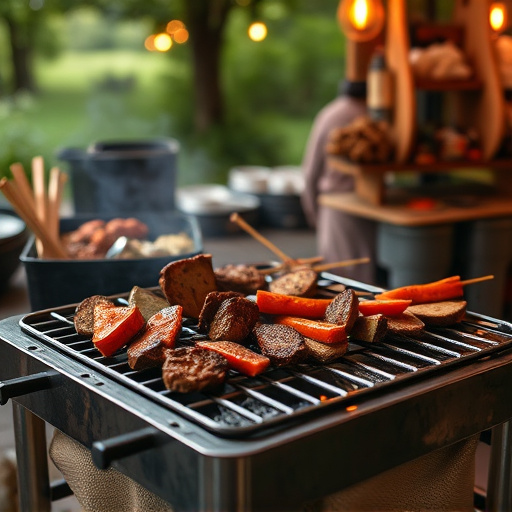
Achieving perfectly sliced BBQ brisket with a desirable bark requires some trial and error, as many BBQ enthusiasts can attest. One common mistake is overcooking, which can lead to tough meat and loss of that mouthwatering crust. To avoid this, focus on achieving the right internal temperature—around 165°F (74°C)—before wrapping it in foil during the slow-cook process. This ensures juicy, tender brisket without sacrificing flavor development.
Another blunder is insufficient seasoning. A well-marinated brisket is key to enhancing its natural flavors. Ensure your BBQ brisket recipe includes a generous blend of salt, pepper, and other spices designed for beef, allowing the meat to absorb their richness throughout the long, slow cooking process. Remember, patience is paramount in the pursuit of perfect brisket; allow enough time for the flavors to meld, resulting in a truly exceptional BBQ experience.
